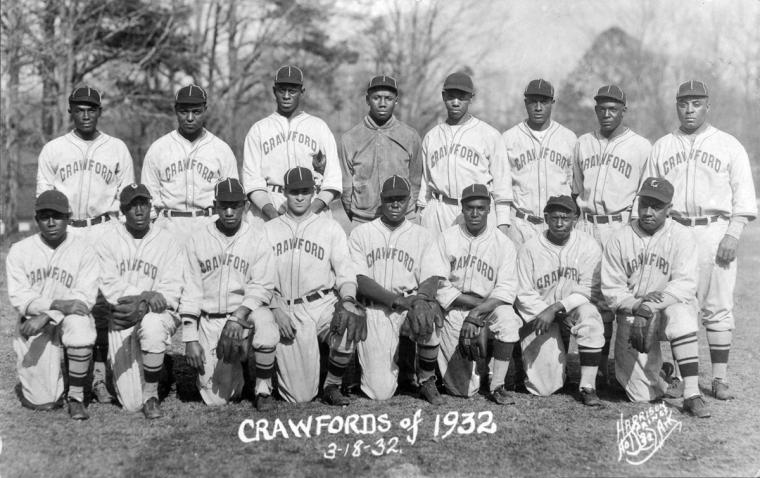
Pittsburgh Crawfords: By Harrison Studio - Heritage Autions, Public Domain through Wikimedia.
Baseball has always been a game about numbers and percentages, and now, with Major League Baseball’s integration of the Negro Leagues’ remarkable statistics into the historical record, the sport has gained more layers of richness and complexity. MLB’s recent announcement heralded the completion of a three-year study by a 17-person committee chaired by John Thorn, MLB’s official historian. The research has unveiled new leaderboards that incorporate the statistics of 2,300 Black major leaguers who played in one of seven Negro Leagues from 1920 to 1948.
“The review committee poured through decades of box scores, data and more to find statistics for the long project,” writes Ryan Young at Yahoo Sports. He adds that Barnstorming games, or exhibition games, were not counted. It’s estimated that the league had access to about 75 percent of box scores from Negro League games during that timespan.
“We are proud that the official historical record now includes the players of the Negro Leagues,” MLB Commissioner Rob Manfred stated. “This initiative is focused on ensuring that future generations of fans have access to the statistics and milestones of all those who made the Negro Leagues possible. Their accomplishments on the field will be a gateway to broader learning about this triumph in American history and the path that led to Jackie Robinson’s 1947 Dodger debut.”
The Baltimore Sun reports, “MLB set unique standards for Negro Leagues players to qualify for its major league leaderboards. Players who spent their entire careers in the Negro Leagues require at least 1,800 at-bats or 600 innings innings pitched, compared with 5,000 at-bats and 2,000 innings for MLB leaders.”
The study isn’t finished, either. The researchers assigned to the project estimate it is approximately 75 percent complete, meaning more players could show up on leaderboards, and statistics might be adjusted moving forward. In the meantime, some of the most notable changes include:
• Willie Mays’ career hit total rose to 3,293 after including his 1948 season with the Birmingham Black Barons.
• Minnie Minoso joined the 2,000-hit club after including his time with the New York Cubans.
• Jackie Robinson now has 1,567 career hits after including his time with the Kansas City Monarchs.
• Satchel Paige has 125 wins after including his 28 in the Negro Leagues.

Many current MLB players are enthused by the new statistics. “It is really exciting,” Cincinnati Reds pitcher Hunter Greene tells AP News. “I’m going to have to do a little bit more research and understand some of the history to kind of rewire my brain on some of the best players.”
Washington Nationals pitcher Josiah Gray also believes it’s good for the game, reports AP News. “For the Negro League players in the past who were exceptional for what they did, it is good to be drawn into the light. It is really cool to see Josh Gibson, Oscar Charleston and a lot of other names that baseball fans can learn about and for them to see there was more than Major League Baseball back then.”
“I think it’s a pretty cool thing that you show recognition,” Giants pitcher Jordan Hicks remarks. “It was two different leagues, but it’s still baseball at the end of the day, and then whenever they came together, you saw the guys that stood out in the Negro Leagues really performed in MLB. So, I think it’s fair that if they were still the same guy in the Negro Leagues as they were in MLB, those stats should match up, especially if it was in the same era.” AP News also notes that on June 20, the St. Louis Cardinals and the San Francisco Giants will play a tribute game to the Negro Leagues at Rickwood Field in Birmingham, Ala.
But not everybody is pleased about the addition of Negro Leagues stats to MLB. Mark Madden, writing for TribLIVE.com, argues, “Records for MLB should be limited to games played in MLB.” He opines, “Black players being excluded from MLB till Jackie Robinson broke the color barrier in 1947 is a dark, inexcusable piece of baseball history. It’s also something that can’t possibly be fixed. It’s a wrong that can’t be righted. [Josh] Gibson was an all-time great player. We already knew that. He’s in the Baseball Hall of Fame. He's now MLB’s all-time leader in career batting average, single-season batting average and lifetime OPS. Without playing one day in MLB. The intentions are good. The result is comical. The Negro Leagues were not part of MLB. To include Negro League stats in MLB stats is dishonest and factually incorrect.”
Athough the Negro Leagues never played under the auspices of MLB, they absolutely played big-league baseball, posits Steve Buckley of The Athletic. “[Satchel] Paige was 59 years old the night he pitched against the Boston Red Sox [on September 25, 1965]. Call Paige’s appearance a publicity stunt if you want, but Carl Yastrzemski’s first-inning double was the only hit off Paige. Twenty-year-old Sox star Tony Conigliaro, who would lead the American League in home runs in 1965, flied out to right in his lone plate appearance against Paige, who was old enough to be Conig’s grandfather. Makes you wonder what it must have been like to face Satchel Paige when he was 20 and pitching for the Birmingham Black Barons.”
It seems that what this truly is all about is recognition and acknowledgement, which will serve to increase awareness and appreciation of the sport’s history. The idea is to end separation, not perpetuate it.

